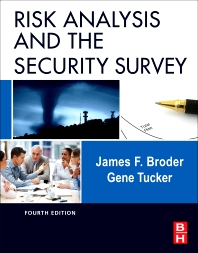The data center cloud already has brought big changes to the security business by enabling remote system control from users’ smartphones. But there’s more to come — including tighter integration with other smartphone apps and greater use of cloud-to-cloud communications. Increasingly, manufacturers also are rethinking the security system, in some cases replacing keypads with smartphone apps and replacing the traditional control panel with a router, hub or gateway controlled through the cloud.
Alternatives to the Control Panel
One company that already has released an alternative to a traditional alarm panel is Hudson, Wis.-based Resolution Products. Dave Mayne, Resolution Products vice president of marketing, calls the replacement product, which attaches directly to a customer’s broadband connection, a sensor router, and explains the rationale for this design choice.
This approach, he says, enables “sensor services, one of which is security.” By relying primarily on smartphone apps in place of keypads, the product can easily be tailored for a variety of functionality, which could include home automation, for example.
“The system isn’t as purpose-built,” Mayne explains. “Interfaces and functionality are defined by the cloud you’re talking to.”
Installation time also is reduced because this approach doesn’t require a panel or keypad to be located near the front door, which is typically a considerable distance from the point where the broadband connection comes in to the home. Mayne estimates that a Resolution Products system, which relies on wireless sensors, can be installed in one-fourth the time of a traditional system.
Resolution Products hopes simplified installation will help broaden the base of potential security customers from about 25 percent of total households to around 45 percent. Another goal is to reduce churn by making the system “part of daily life.”
Other manufacturers that have released similar products or plan to do so have similar goals. Sugarland, Texas-based ipDatatel is working on a sensor router-type product for release in 2017, which ipDatatel President and CEO Russell Vail believes will expand the market for home security by enabling a pay-as-you-use-it approach that will appeal to apartment dwellers who will purchase the product and set it up themselves.
Rod Coles, CEO of Colorado Springs, Colo.-based White Rabbit Electronics, notes that one of the biggest reasons some people cancel monitoring service is that they never use their systems. To overcome that issue, “we wanted to develop a system that would work automatically,” Coles explains. This approach relies on what Coles calls “user awareness,” which will be an important element of a White Rabbit Internet-connected Smart Hub control panel alternative scheduled for release in 2017.
By detecting when an authorized user’s smartphone has shifted from cellular into the home’s “WiFi bubble,” for example, the system can automatically disarm. User awareness also can be used to decrease the temperature or adjust lights as users move around the home.
Another advantage of cloud connectivity, Coles explains, is that you can put a lot of processing power in the cloud. Using that capability [in combination with video or sensors], security systems eventually should be able to detect using analytics if a specific threat is present, for example.
Honeywell, which calls its control panel alternative the Lyric Gateway, will be tapping intelligence in the cloud to simplify system installation, explains Alice DeBiasio, general manager of cloud services for Atlanta-based Honeywell Software Solutions.
“Adding devices becomes very simple,” DeBiasio says. Instead of installers entering codes at the panel to add sensors, the gateway will deliver prompts to a user’s smartphone app to step the user through the process — potentially enabling end customers to add sensors and reducing reliance on technicians.
It’s important to recognize that systems that rely totally on the cloud could lose important functionality if the home’s Internet connection becomes inoperative, but some manufacturers address that by building both landline broadband and digital cellular connectivity into their control panel replacements, thereby providing a backup.
App Evolution
Security systems aren’t the only type of equipment that end users are controlling from their smartphones — and as more and more devices gain cloud connectivity, some end users are beginning to get frustrated with the need to use multiple apps. As Shawn Welsh, senior vice president of product line management and marketing for Atlanta-based Telguard, notes, some security dealers also may be wary of consumers learning that some apps provide free connectivity, while those offered by security dealers typically entail a monthly fee.
Some manufacturers are beginning to address concerns such as these, and they are going about it using a variety of approaches.
Honeywell, for example, has made agreements with several manufacturers to integrate the manufacturers’ apps with apps that connect to Honeywell’s Total Connect cloud. DeBiasio cites the example of the SkyBell video doorbell. If the doorbell button is pushed or motion is sensed, an alert is sent to the user’s smartphone and the user will have the ability to view images from the video doorbell and have a two-way conversation with whoever is at the door, she explains.
DeBiasio describes what Honeywell has achieved with SkyBell and other partners as “full integration,” meaning that after completing a development effort with the other company, end users now don’t need the app associated with the other devices except for certain specialized functionality such as changing settings on the other device.
Some other manufacturers advocate a different approach to app integration, which is commonly referred to as “cloud-to-cloud” integration. With this approach, two companies that operate clouds make an arrangement for their devices to communicate with each other via a cloud connection.
As Vail explains, “I’m going to publish to the cloud that your security system is armed in away mode. My API [application programming interface] instructs the other API that if [the security system is] armed away, it should turn off the interior lights. Even though the alarm system has nothing to do with the lights or the thermostat, because you’re connected to the cloud you can make a dumb alarm system smart.”
One advantage of this approach is that it can overcome incompatibilities between the on-premises communication methods used by the alarm system (typically Z-Wave or Zigbee) and certain other cloud-connected devices such as the popular Nest thermostats, which use Wi-Fi communications. Instead of communicating directly with the security system, these devices communicate with the security system via the cloud-to-cloud interface.
Some security equipment manufacturers, including ipDatatel and White Rabbit, will be using a cloud-to-cloud approach to integrate their systems with a range of other devices controllable through a cloud operated by Amazon to support the Amazon Echo voice-controlled assistant. Other security manufacturers also are working on adding this capability and some plan to integrate with other voice-controlled assistants from Apple and Google — a topic SDM will cover in an upcoming issue.
DeBiasio argues that there are limitations to a cloud-to-cloud approach, however. According to her, some of the capabilities of Honeywell’s integration with the SkyBell video doorbell, for example, would not have been possible using a cloud-to-cloud approach.
Whatever means they use to interface with one another, manufacturers and cloud operators will need to resolve a number of open issues moving forward. As Vail notes, these include determining who owns which data and how to troubleshoot problems with functionality that relies on more than one cloud.
Another question that could arise as more and more cloud services become available is how much customers are willing to spend on those services. Will customers feel they are being nickel-and-dimed to death?
Mayne argues that some functionality will pay for itself. For example, a cloud-based app that automatically adjusts the temperature when a homeowner is away from home can yield major energy savings. He adds that costs will come down as the cost of computing power comes down.
Not all end users want the kind of functionality that cloud-based security enables. But as consumers in general become more sophisticated, the industry should see more and more opportunities involving security and the cloud moving forward.
App Not Required
Cloud control of security and other system functionality doesn’t always have to be tied to an app or keypad. End users can gain some powerful functionality at no charge using websites such as IFTTT and Stringify, notes Shawn Welsh of Telguard.
End users can use the websites to connect two different systems by setting up “if this, then that” commands (hence IFTTT’s name). As Welsh explains, users can use IFTTT or Stringify to set up scenarios such as “If you get an email with a certain subject line, turn off the lights.”
For cloud operators such as Telguard, websites such as those offer an open interface to support connectivity to numerous other clouds using a cloud-to-cloud approach, Welsh explains.
“You can tell them what things you allow people to do and what you can tell them about the system,” he explains. IFTTT and Stringify then post this information in a gallery that contains similar information about hundreds of other systems.
A similar option is also in the works from ipDatatel, which plans to provide its own portal that customers will be able to use to set up “if this, then that” scenarios. In addition, customers will be able to subscribe to services such as storage from other cloud providers through the portal, explains Russell Vail, ipDatatel president and CEO.
Cloud-Enabled Control Via Apple TV
Smartphone apps, keypads and voice-activated assistants aren’t the only ways end users can control their security systems. Some cloud providers — including Tysons, Va.-based Alarm.com and, soon, Springfield, Mo.-based Digital Monitoring Products (DMP) — also offer end users the ability to interact with their systems via Apple TV apps. Like smartphone apps and voice-activated assistants, those options also rely on the cloud for functionality.
Apple TV offers an alternative to traditional television options by giving end users the ability to watch a wide range of movies and television programming over a broadband Internet connection. End users connect a small Apple TV box to their television set and to the broadband connection, controlling the device using a remote control.
As Clayton Tummons, director of mobile technology for DMP, explains, end users who have both a DMP security system and Apple TV will be able to download an app to the TV at no charge that lets the users control certain security system functionality via the Apple TV remote control. The initial version will control video cameras and in the future, DMP will add arming and automation, Tummons said.
“The DMP Apple TV app communicates to our secure servers, which then communicate to the panel and back,” Tummons explains.
MORE ONLINE
For more information about security in the cloud, visit SDM’s website where you’ll find the following articles:
“Who Owns the Customer in a Cloud Model?”
www.SDMmag.com/who-owns-the-customer-cloud
“Security Dealers Find More Ways to Integrate Apps Into Their Businesses”
www.SDMmag.com/more-ways-to-integrate-apps
“Connected Home: Domestic Bliss or Distress?”
www.SDMmag.com/connected-home-bliss-or-distress













